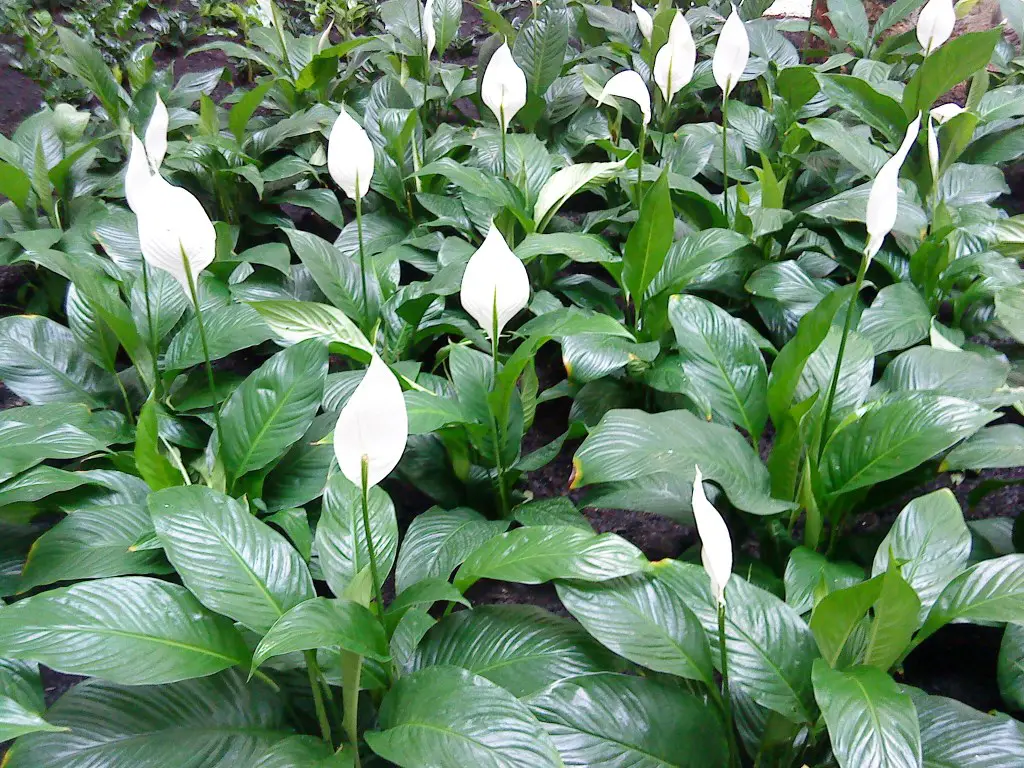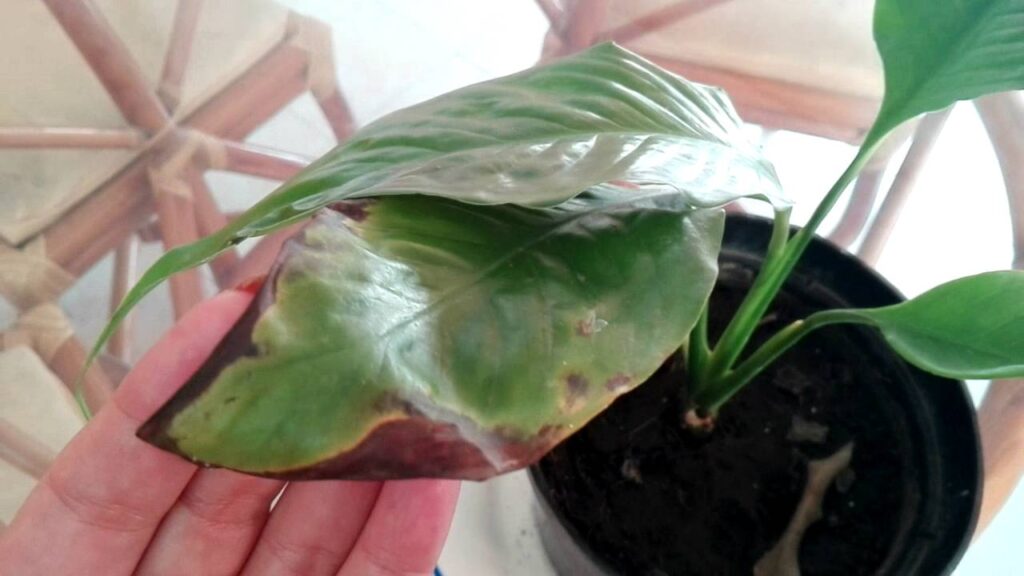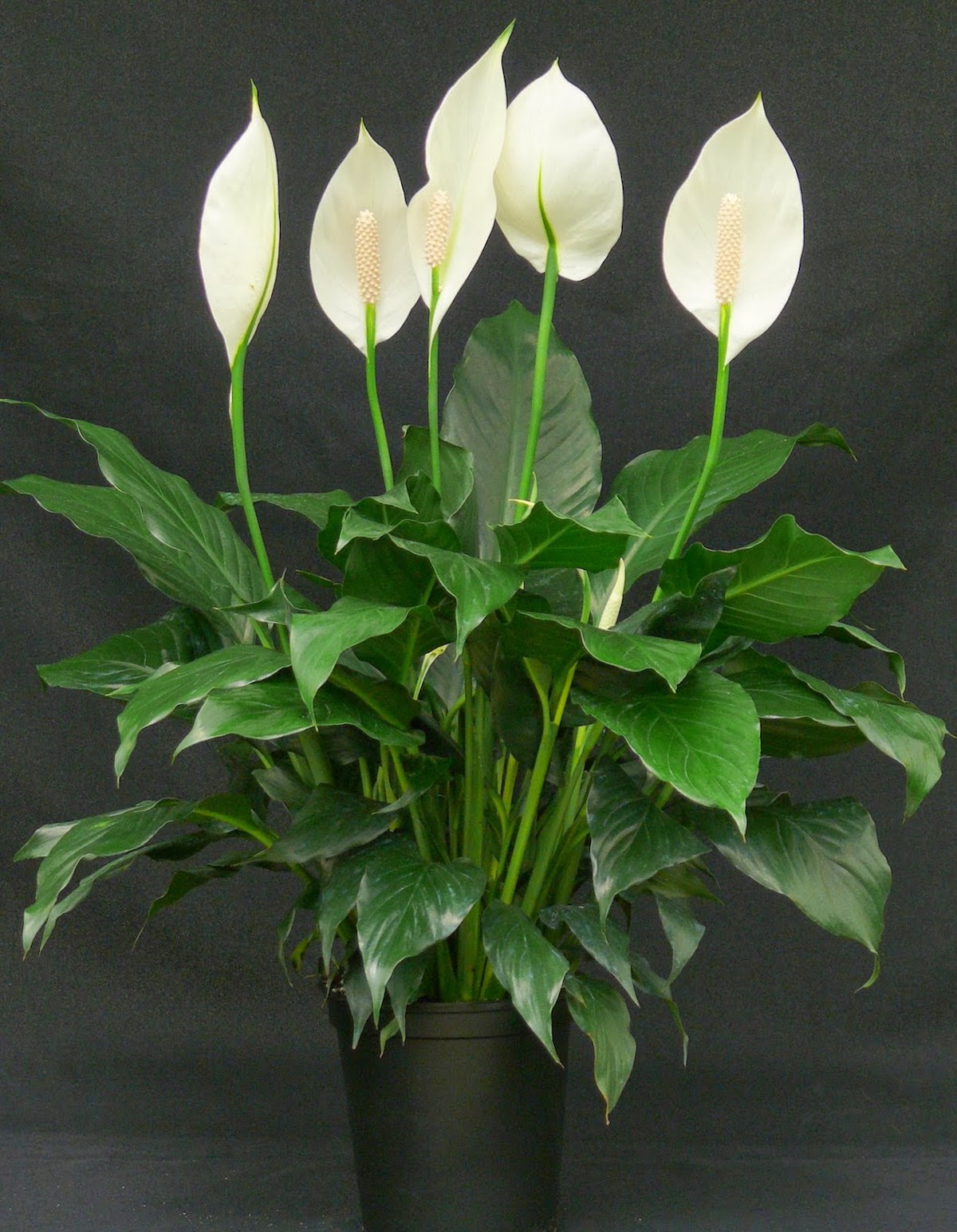The Peace Lily is a beautiful plant with a dark green hue in its foliage and a spiky white flower that makes it a perfect ornamental plant for both indoors and outdoors. In this article we are going to show you all its characteristics, care, pests and diseases that can damage it. Keep reading to learn much more about this plant.

peace lily
The Peace Lily is scientifically known by the name of spathiphyllum, It belongs to the Araceae family, originally from America, so it adapts very well to tropical environments, that is, in temperatures between 16 and 21 degrees. It is a highly resistant plant, which stands out for its white flowers in the form of and bright intense green foliage, which makes it a luxury piece when it comes to decoration.
Features
This plant has very special characteristics, starting with the tonality of its foliage, as it is bright dark green and the leaf is large and oval in shape. Its leaves have the ability to remove pollutants from the environment. Its flowering is perennial and white in color and in the center are the seeds. Its root is short and the leaves are born from the base of the plant.
Care
Peace lily like any plant requires certain care. Here we indicate what those basic attentions are so that your plant grows properly. This bush requires good light not directly, although it has the ability to survive in poorly lit areas. For this reason, it can be planted both indoors and outdoors. It should be taken into account that sudden changes in temperature can visibly harm the plant. Regular pruning to two or three centimeters above the union of the leaves is important, which will dry and can thus be removed to allow new flowering.
Irrigation
This plant requires moderate irrigation with soft or lime-free water, that is, approximately every 10 days, which should be extended during the winter to every 15 days. It is important that the soil is moist but not flooded, for this the pot must have good drainage. Spraying should be avoided as they tend to facilitate the reproduction of fungi. The plate should be removed to prevent the root from rotting.
Subscriber
The plant must be fertilized regularly, this fertilizer can be universal liquid, for this it is necessary to follow the instructions. It is important that the soil has enough nutrients, for this it is recommended to use sustained-release or high-spectrum fertilizers.
Location
The espatifilo for being a striking plant with great foliage and beautiful permanent flowering, makes it ideal to locate it both indoors and outdoors with certain care, which we indicate here.
Interior
This plant can be safely located indoors, provided it receives enough light, even when it is able to withstand a certain degree of semi-darkness. The light should never be direct as this leads to the leaves and flowers tending to wither. Also, keep in mind that this plant does not resist gusts of wind or violent changes in temperature.
Body exterior:
In the case of being planted outside, the peace lily should be located in a place where the sunlight does not fall directly, so it is recommended that it be close to higher altitude plants that generate a good shade, in addition to its Its roots are not invasive, which makes it easy to have it next to other plants, although it is advisable to plant it individually in pots for an excellent development. When planting outdoors, you have to be very aware of the ambient temperature, knowing that it does not tolerate frost and strong drafts.
Planting time
The peace lily is a plant that blooms all year round, so it is advisable to transplant it from a pot every 2 or 3 years, since its progressive growth covers the entire place. The best time for planting is during spring. To achieve a good plantation, it is recommended to use a medium to large pot, fill it with a mixture of fertilizer and perlite (mineral), make a hole in the center of approximately 50×50 cm, try not to make it too high or too low, water without flooding and that's where the growth process begins.
Pests
In this plant it is common to observe three types of pests, which tend to destroy it if there is no prevention or attack in time. These pests are:
Mites: also known as red spiders, they are tiny parasites that feed on the cells of the leaves, turning them yellow, then they darken to the point of defoliation. This plague reproduces rapidly, which weakens the plant rapidly. An assertive way to kill these parasites organically is recommended to use infusion of dried nettle, garlic or onion cuts around the plant. If it is done chemically, it is advisable to use binapacryl, methoate or fosalone.
Aphids: This plague is very frequent in plants and they stay on the underside, feeding on their sap. These aphids secrete a substance called honeydew that accumulates in different parts of the plant, attracting large numbers of ants. You can also see how the leaves are rolled up until the death of the plant. To treat these parasites it is recommended to do it both chemically and using natural methods.
Apply strong jets of water to detach the aphids from both sides of the leaf, spray garlic infusion, or use neem oil and in the case of the chemical, the most recommended is Biona, which does not cause secondary damage to the plant.
White fly: These are lodged in the upper part of the plant on the underside of the leaf to absorb the sap of the plant, depriving it of all the nutrients and water, which generates a great weakening and, like the aphid, creates a honeydew that attracts the ants bringing as a consequence, thanks to their stings, the infection with fungi and bacteria. The treatment for this pest is the same used for aphids.
Common peace lily diseases
Like any plant, the espatifilio is prone to acquiring certain diseases that destroy it little by little until it reaches its death if it is not diagnosed and treated quickly. The most observable consequences of each of these diseases are the appearance of brown and chlorotic spots on leaves and flowers, rotting of leaves and roots, as well as decreased growth. These common diseases are:
Phytophora: This pathogen causes the wilting of the plant until it reaches defoliation, it survives for a long time in the soil, being favored by high temperatures and waterlogging. To avoid contagion, it is suggested to fertilize with fertile soil from time to time (change it all), avoid excessive irrigation, and disinfect the tools that will be used to manipulate the plant.
Cylindrocladium: This fungus causes brown spots on the upper part of the leaf that grow little by little until they die. It should be noted that even when the leaf falls off, the live fungus can last up to 3 years. To prevent the plant from becoming infected, it is suggested not to water with a sprinkler, as this helps the fungus to expand. It is difficult to find a treatment, what is done is to avoid contagion or total destruction of the plant.
Cercospore: It also causes spots on the leaves, to avoid contagion it is suggested that the plant be in a well-lit place, apply fungicide two or three at not very spaced intervals. Infecting the plant takes only 16 hours and goes from the bottom up, causing accelerated defoliation.
Colleotricum: This fungus directly attacks the stem, leaf, and flower, appearing as a sunken dark-colored spot. One of the main cares is to avoid excessive irrigation, apply good amounts of minerals, application of calcium chloride.
Problems you may have
Even though it is a plant that does not require much care, it is normal for certain problems to appear that can make its appearance ugly or lead to its total destruction. Here we present some problems so that you can learn to identify the situation that arises.
Does not bloom
When the plant does not bloom, it is necessary to review certain aspects such as: the size of the pot, which must have adequate space for the healthy development of the roots and which must be replaced by a larger one every two years approximately. Another reason why the plant does not bloom may be due to the lack of light, since it requires this element to be able to bloom. Finally, the lack of nutrients, hence the importance of fertilizing the plant with enough nutrients.
Leaves that lose color
Peace lily leaves tend to lose their color when exposed to direct sunlight or on the contrary in a very dark area, so it is recommended to place it in a bright place.
the plant wilts
The main cause of wilting is due to lack of water. It is recommended that irrigation be abundant but scattered to keep the soil moist. 4 to 5 liters should be used depending on the size of the plant.
dried leaf tips
Most of the time, the plant begins to show burnt tips due to excess fertilizers or strong air currents or air conditioning, since low temperatures tend to burn the leaves.
Advantages of having a peace lily
- This plant has ornamental characteristics due to its elegance and continuous flowering.
- It is easy to maintain
- It cleanses the environment, as it absorbs pollutants and releases large amounts of oxygen.
Curiosities of the peace lily
Did you know that this plant is recommended by NASA to purify the environment. For this reason it is called office plant. It also has the property of eliminating bad odors and producing large amounts of oxygen. It is known as the "peace flower", "wind candle" or "cradle of Moses". Its leaf serves as a protective blanket for the seeds.
If you want to learn more about peace lilies, watch the following video.
To learn more about flowers, I invite you to follow these links:




